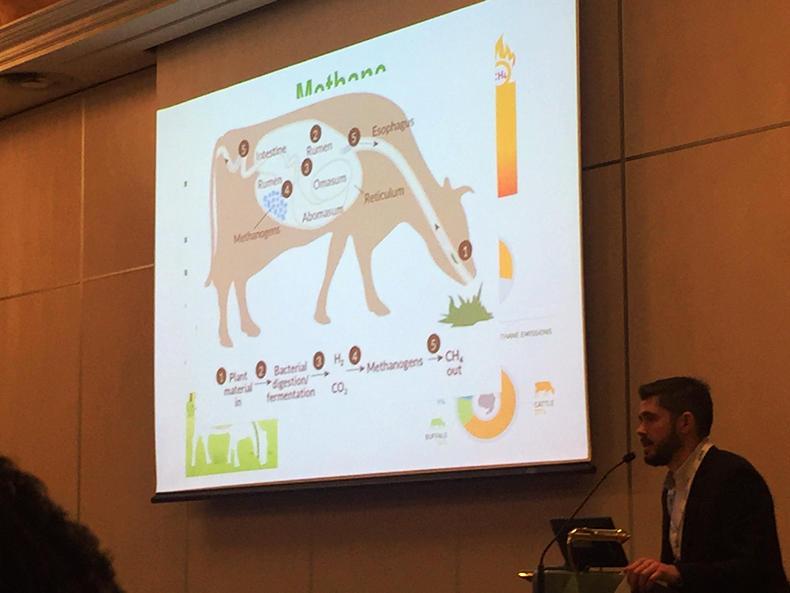Teagasc researcher Paul Smith explained at this year’s ICBF beef and sheep genetics conference that beef cattle which ranked higher on the replacement index and terminal index emitted less methane.
The data was gathered at the ICBF Tully performance centre, where, along with gathering feed intake and feed conversion data, they also collect estimated enteric methane production data.
Animals on the trial first underwent a training period followed by three weeks of methane data collection.
Data
Data showed that heifers on average produced 22.1g of methane per kilogramme of dry matter digested. This increased to 22.3g for steers, 0.7% higher due to the larger size of the steer.
This data is based on animals which weighed on average between 500kg and 520kg with an average age of 16 months.
This data was compiled to aid in animal selection going forward to assist Ireland in meeting international mitigation commitments.
Other possible ways of reaching these commitments is through reducing livestock numbers or the use of supplements through feeds.
This development, combined with earlier finishing, could mean that the Irish suckler herd may not be under as much pressure to reduce to meet climate change objectives as first initially thought.






 This is a subscriber-only article
This is a subscriber-only article









SHARING OPTIONS: